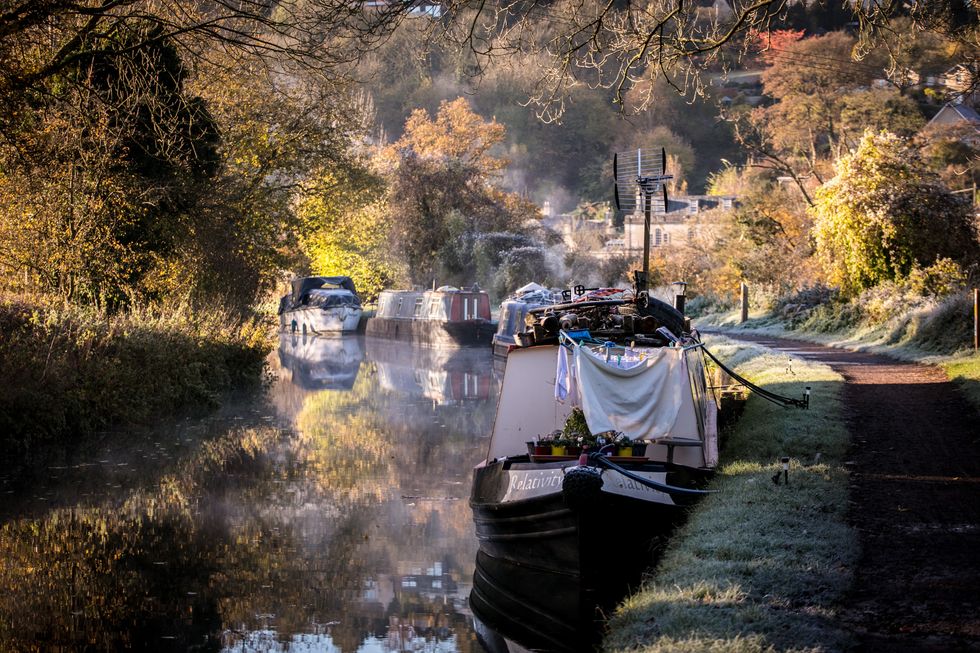With record numbers choosing narrowboats over airports, canal holidays are enjoying a resurgence in Britain. Whether it's a leisurely week along the Llangollen or a weekend loop through the Midlands, the UK’s canal network offers a peaceful, scenic alternative to crowded beaches or city breaks. Here are 10 of the best canal routes to explore this summer.
1. Llangollen Canal, Wales to Shropshire
This picturesque route winds from Llangollen in Wales to the English market town of Whitchurch. The highlight is the spectacular Pontcysyllte Aqueduct, a UNESCO World Heritage Site, where boats cross a 38-metre-high cast-iron trough. Along the way, travellers pass through verdant countryside, charming villages, and the Horseshoe Falls. It’s one of the most photographed waterways in Britain.
2. Caldon Canal, Staffordshire
Often described as a hidden gem, the Caldon Canal runs 18 miles from Stoke-on-Trent to Froghall in the Staffordshire Moorlands. Its peaceful waters take in industrial heritage, steep wooded valleys, and the remote Churnet Valley. It’s a quieter option ideal for wildlife spotting and exploring lesser-known parts of the Peak District.
3. Kennet & Avon Canal, Bath to Reading

Linking the River Thames with the River Avon, this 87-mile stretch offers a blend of natural beauty and architectural splendour. Cruisers can pass through the city of Bath, a UNESCO World Heritage Site, before navigating rural Wiltshire and Berkshire. The Caen Hill Locks—a flight of 29 locks in Devizes—are a particular highlight.
4. Monmouthshire & Brecon Canal, South Wales
Running through the Brecon Beacons National Park, this 35-mile canal is ideal for a short break. With no locks along the central stretch, it's perfect for beginners. Travellers enjoy views of the Black Mountains, quiet towpaths, and welcoming canal-side pubs.
5. Shropshire Union Canal, North West England
Stretching from Wolverhampton to Ellesmere Port, the “Shroppie” offers a mixture of rural scenery and industrial heritage. Its straight engineering and deep cuttings make for easy cruising. Highlights include the historic town of Chester, with its Roman walls and timber-framed buildings.
6. Avon Ring, Midlands
For more experienced boaters, the 109-mile Avon Ring loops through Worcestershire and Warwickshire, taking in the rivers Avon and Severn, and parts of the Worcester and Birmingham canals. The route passes Stratford-upon-Avon—Shakespeare’s birthplace—making it ideal for culture enthusiasts. It includes over 130 locks and requires 10–14 days to complete.
7. Leeds & Liverpool Canal, Northern England
Britain’s longest single canal, the Leeds & Liverpool runs for 127 miles through Yorkshire and Lancashire. Offering striking contrasts—from the Pennine hills to the cityscapes of Leeds and Liverpool—it’s a journey through the industrial North. The Bingley Five Rise Locks are a notable engineering feature.
8. Oxford Canal, Oxfordshire to Coventry
A tranquil, winding route that takes in rolling countryside, sleepy villages, and waterside pubs. The South Oxford section, between Oxford and Banbury, is especially popular for its gentle pace and scenic surroundings. It's well-suited to first-time narrowboaters or weekend breaks.
9. Lancaster Canal, North West England

This lock-free canal is perfect for relaxed cruising. It runs from Preston to Kendal, with views of the Pennines and Morecambe Bay. Part of the northern stretch is currently unnavigable, but the southern section still offers peaceful waters and stone-built aqueducts. The Glasson Branch connects the canal to the sea.
10. Grand Union Canal, London to Birmingham
As the main line between England’s capital and second city, the Grand Union is rich in both history and variety. Boaters can explore the Chiltern Hills, picturesque villages like Stoke Bruerne, and urban areas like Milton Keynes. It’s a long route but can be broken into manageable sections for shorter holidays.
A Summer Alternative
With staycations continuing to appeal, canal holidays offer an unhurried way to see the British countryside. Whether it’s a short trip or a full fortnight afloat, the UK's waterways provide a slower, more scenic summer experience—no passport required.

















 Reservoir levels in the area dropped to around 62 per centGetty Images
Reservoir levels in the area dropped to around 62 per centGetty Images A yellow-level heat health alert has been issued for seven regionsGetty Images
A yellow-level heat health alert has been issued for seven regionsGetty Images Firefighters in areas such as Dorset and the West Midlands are on high alertGetty Images
Firefighters in areas such as Dorset and the West Midlands are on high alertGetty Images It increases the risk of flash flooding and water run-offGetty Images
It increases the risk of flash flooding and water run-offGetty Images UK winters have seen a decrease in frost days and snowfall over the past decadeGetty Images
UK winters have seen a decrease in frost days and snowfall over the past decadeGetty Images
